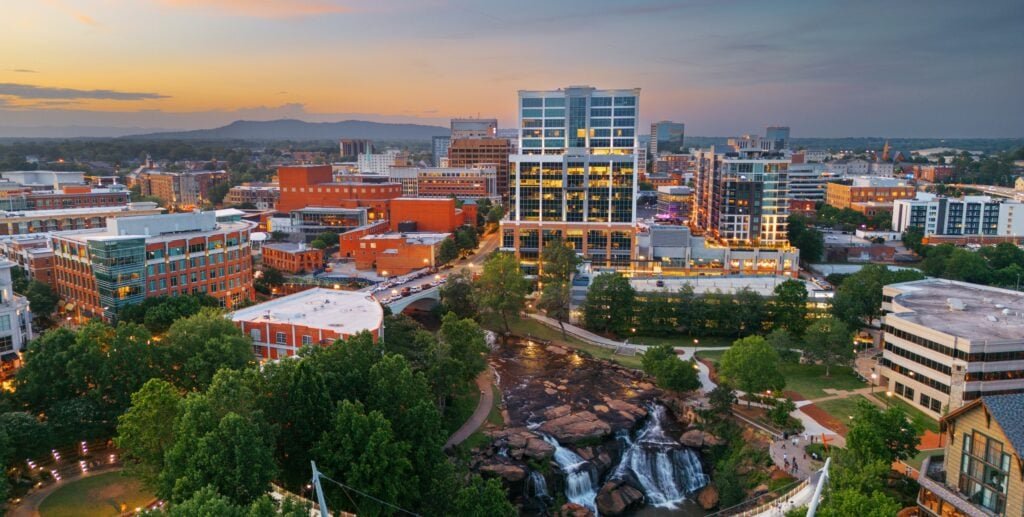In this analysis, I didn’t want to include markets that are still growing and already on everyone’s radar, like Boise, Idaho; Raleigh, North Carolina; and, of course, Austin, Texas. Instead, I wanted to feature less popular markets that are still experiencing strong job, income, population, and household growth—all metrics that point to a market with great underlying fundamentals.
Out-of-state investors just looking for cash flow may want to see the top three cash flow markets in 2025. Otherwise, if you’re here to look for markets with stronger appreciation potential, keep reading.
1. St. George, Utah
Metrics:
- Median price: $516,300
- Median rent: $2,148
- Rent-to-price ratio: 0.42%
- Five-year job growth: 24.79%
- Median income: $49,223
- Unemployment rate: 3.3%
- Metro population: 189,827
The job growth in St. George is impressive, but it’s also the smallest market on this list. The market contains a college, is close to Zion National Park, and is a popular place for retirees.
This may be a reason why the median income is the lowest on this list: College kids and retirees usually make less reported income than those in the middle of their careers. Regardless, there is strong demand and limited supply for this market, pushing up prices.
This brings us to what I consider the main drawback for this market: the high median price. This will be a barrier to most new investors trying to get their foot in the door and find cash flow (although there is a good appreciation argument for investing here).
Moving forward, the following markets will have a lower median price point and higher population.
2. Huntsville, Alabama
Metrics:
- Median price: $338,100
- Median rent: $1,766
- Rent-to-price ratio: 0.52%
- Five-year job growth: 16.35%
- Median income: $71,846
- Unemployment rate: 2.9%
- Metro population: 504,712
Huntsville is an industrial home to military defense and aerospace. The Cummings Research Park (CRP) is also located here and is the second-largest research park in the United States. There are also a number of Fortune 500 companies with operations in the area.
The economy keeps growing here, and so does the median income, which means home prices are likely to keep rising. So, is there any drawback?
For investors, the answer is maybe. The multifamily vacancy rate is at a record high of 18% (CoStar), while the overall vacancy rate (includes both multifamily and single-family) is 7% (U.S. Census).
While there is very strong demand, the metro area has done a great job at keeping supply up. This makes home prices rise slower, which is great for renters and aspiring homeowners alike. It means your real estate will appreciate slower than in a place like St. George.
3. Greenville, South Carolina
Metrics:
- Median price: $328,300
- Median rent: $1,624
- Rent-to-price ratio: 0.49%
- Five-year job growth: 9.63%
- Median income: $59,602
- Unemployment rate: 3.8%
- Metro population: 945,301
Greenville is located between the Atlanta and Charlotte metropolitan areas (or “Charlanta,” as the megaregion is called) and will likely continue to benefit from the high growth of those areas.
The economy in Greenville is driven mostly by manufacturing and logistics, with the financial activities sector also seeing strong growth, which helps to diversify the area.
As a tertiary (but still-growing) market, you’re likely to face less competition from other investors than you would in other more popular markets in the Piedmont Atlantic megaregion like Atlanta or Charlotte.
Honorable Mention: The Birmingham, Alabama, Suburbs
Metrics:
- Median price: $252,500
- Median rent: $1,607
- Rent-to-price ratio: 0.64%
- Five-year job growth: 3.55%
- Median income: $59,509
- Unemployment rate: 3.2%
- Metro population: 1,181,432
I debated including Birmingham on this list due to its lower five-year job growth (compared to other high-growth cities). However, it has a high rent-to-price ratio, a relatively high median income, and a low unemployment rate, and is one of the most affordable metropolitan areas in the United States. This seemed like a good trade-off to me.
And it’s not like the area isn’t growing; the manufacturing, logistics, finance, education, and health services industries continue to grow here.
So what about the city of Birmingham’s population loss? While the overall region is adding jobs, it appears that people have a habit of leaving the inner city of Birmingham for the outer suburbs (which are experiencing population growth), such as:
- Vance, which is home to the only Mercedes-Benz plant in North America,
- McCalla, a close 25-minute drive southwest of downtown, and
- Gardendale is an even closer 20-minute drive north.
The affordability of this market will likely drive more growth into the region, especially for those who want to escape the growing shelter costs in Nashville or Atlanta but still want to live (and work) in a city.
If you’d like to see new construction homes for sale (that pencil with solid cash flow), Rent to Retirement is currently selling properties in the growth submarkets of Birmingham, like the Vance, McCalla, and Gardendale suburbs.



